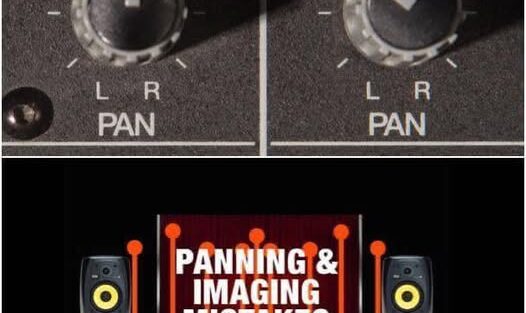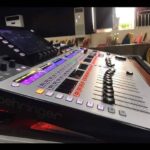Understanding Masking: A Misunderstood Concept in Audio
Today, I want to break down a frequently misunderstood concept in the world of audio: masking.
Simply put, masking occurs when one sound obscures another. More specifically, there’s a type of masking known as frequency masking, where the tonal content of one sound interferes with the clarity of another. It’s a common problem in mixing, and one we regularly face — but masking goes much deeper than just overlapping frequencies.
While frequency masking is real and important, it’s actually just a subset of a bigger issue. At its core, masking is about arrangement and dynamics. Any time two sounds happen simultaneously, there’s potential for interference sometimes that interference is musical and constructive, other times it’s muddy and destructive.
How many times have you soloed the kick and thought, “This sounds HUGE,” only to un-solo it and hear it vanish behind the lead synth even if that synth has no real low end? Yep, it happens more often than we’d like to admit.
So, here’s the real question:
How do we make space for everything in a mix, so each part stands out and sounds full?
Let’s break it down.
1. Not Every Element Needs to Be Separated
If you’re working with a dense arrangement, chances are, some sounds are meant to blend.
Take a string section, for example violins, violas, cellos, bass. The producer likely doesn’t want each instrument to be isolated; they’re intended to sound like one cohesive unit.
The same goes for layered rhythm guitars, stacked drums, synth beds, or traditional talking drums. Trying to force separation in every layer often leads to an unnatural mix. Sometimes, things just sound better together and that’s okay.
2. Assign Roles and Value to Each Element
Let’s say your track has guitars, bass, percussion, piano, drums, and vocals. Before you even touch an EQ or compressor, ask yourself:
- What’s the primary role of each element?
- Does the piano need that booming low end?
- Is the finger noise from the acoustic guitar really essential?
- What’s more important the attack of the kick or the attack of the bass?
These decisions help you determine what deserves presence, what can take a back seat, and how you can distribute energy across the mix. From there, separation becomes much easier, both dynamically and frequency-wise.
3. Manage Your Reverb & Dynamics
A big source of masking is excessive reverb or sloppy dynamic control.
- Long reverb tails may sound gorgeous in solo, but in the full mix, they often become clutter and mud.
- Be intentional with release and sustain times, what works in a ballad may not work in an indie-rock or gospel groove.
- A fat, boomy kick might hit in a hip-hop mix, but destroy clarity in a Fuji or Juju gospel track.
It’s often easier to separate elements through dynamic contrast than EQ. For instance, letting one sound punch (attack) while another hangs (sustain) can be more effective than carving out frequencies.
Don’t be afraid to gate a clap or shorten a tambourine’s tail sometimes less is more, and it lets the mix breathe.
4. Then Reach for EQ — Selectively
So you’ve cleaned up the dynamics, adjusted the reverb, and things are sounding clearer but still not quite there?
Now it’s EQ time.
Just proceed with caution: too much subtractive EQ can thin out your mix. Instead, be intentional. Decide what really needs carving and what can be left alone. Sometimes, one small cut is worth more than five big ones.
5. Use Panning Strategically
Lastly, you have the stereo field at your disposal. Panning can be a simple yet powerful way to avoid masking:
- Panning one element left and another right can unmask them quickly.
- But remember: when collapsed to mono, they’ll still overlap.
- Try to make artistic panning choices, not just corrective ones.
Used wisely, panning helps open up the mix and allows each part to breathe without fighting for the same space.
The key takeaway: masking isn’t just about frequency. It’s often about arrangement, dynamics, timing, and clarity.
Sometimes the best fix isn’t an EQ it’s a gate, a well-placed fader move, or a tighter arrangement. Train your ears to hear the mix as a whole and ask:
“What does this track really need?”
When in doubt, simplify.
Thanks for reading and as always,
keep the creativity perfected.
Courtesy: House of Worship Sound Tech Team




